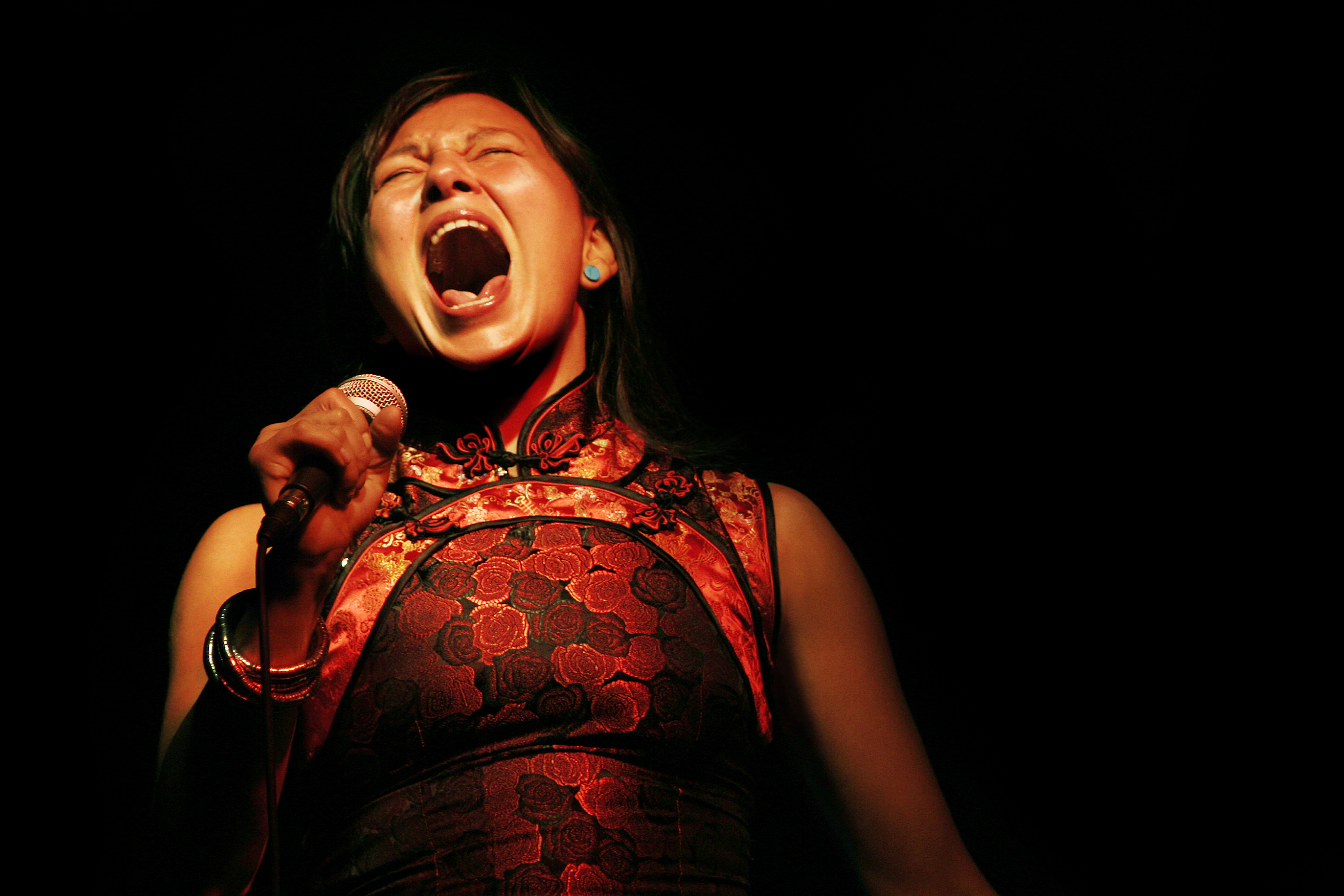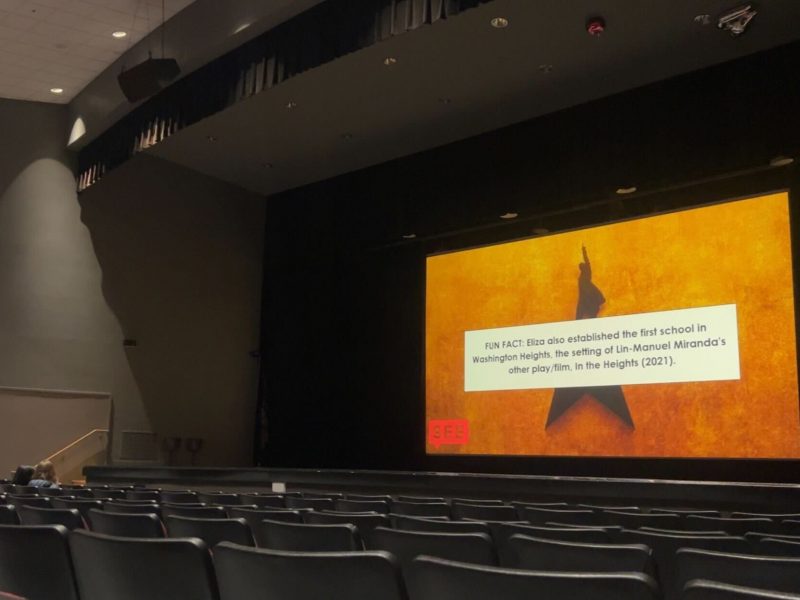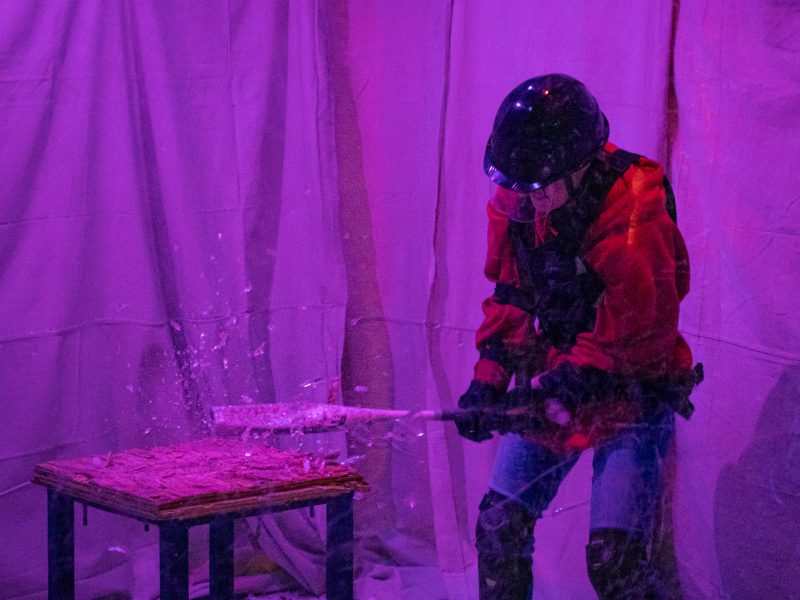Kay Theatre was about half full for Tanya Tagaq’s performance on Saturday night, but those who didn’t find their way to The Clarice Smith Performing Art Center missed out on an experience they likely won’t find elsewhere.
Tagaq is an Inuit throat singer, a guttural style of music traditionally performed by two women. Tagaq’s solo act included two musicians, one on drums and one on violin, with ambiance provided by other instruments both real and electronic.
For a crowd of mostly older adults and a handful of college students, she created the soundtrack, all improvised, to Robert Flaherty’s 1922 film Nanook of the North. The film is considered to be the first documentary, but controversy has surrounded the movie for its portrayal of stereotypes and the staging of scenes.
Having grown up in a small town about 300 miles from the North Pole where hunting and fishing were necessary for survival, Tagaq can forgive the latter.
“I understand why they staged the scenes because sometimes when you’re seal hunting you have to wait for 12 hours for the seal to come,” she said to the audience before the performance.
As an activist for Inuit rights and representation, what interests her most is the way in which Flaherty portrayed her culture.
“Though I believe Robert Flaherty had a deep and beautiful connection with Inuit and the land, inevitably it was 1922 … it was a pretty racist time,” she said. “I can delineate what was the colonial lens and what was actually history.”
Soft spoken, yet charmingly funny, Tagaq’s warmth filled the room. She guided the audience through a culture many people have never encountered. For the Inuit, animals are their food and livelihood, but the relationship can be unpredictable.
“We would hunt them but we were also hunted. Bears are much better at hunting than we are,” she said. “The kids – you have to be careful – they’re like little McNuggets to polar bears. We had to close the schools down and have bear days.”
Tagaq’s musicians combined a low hum with the film’s opening sequence, various shots of ice and wilderness. If Tagaq’s earlier description wasn’t quite vivid enough, the desolateness of the landscape was soon undeniable.
The vocal performance was unlike any other. Tagaq’s throaty, breathy noises were captivating and dramatic, and ranged from ear-piercing to melodic. She let the audience settle into the film on screen behind her, but although she didn’t have a spotlight, she commanded attention. At times, she screeched or whispered almost angrily into the microphone. She moved around the stage, crouching and jumping, using her voice as a vessel for deep and powerful emotions.
Certain moments mimicked the mood of the movie as if it were rehearsed. She made yipping noises as children played with puppies behind her. But as the Inuit children sledded down a hill on their bellies, Tagaq’s bellows were off-putting. Perhaps it was to draw attention to the “happy-go-lucky Eskimo” stereotype she hopes to stomp out.
“People ask me ‘Are you a modern Eskimo?’ and I go ‘Well you’re standing here talking to me – did I time travel?’ Idiots,” she laughed. The audience quickly followed suit.
“The only way we could possibly survive was to fight and hang on to every little bit of love and laughter that we could find because the environment was so harsh and we put up with so much strife,” she said.
Tagaq says premature deaths, darkness and extreme temperatures causes Inuit people to look for joy in everything around them. But the filmmaker didn’t grasp the idea in Nanook of the North.
“We like to laugh at anything and make fun of anything and just love like puppies,” she said. “I think Robert Flaherty saw that as a very naive thing to be doing.”
Tagaq’s understands that her powerful voice may not be for everyone. Though whether it was for the sound, Tagaq’s beaming personality or just the sheer experience, Saturday’s crowd stayed.
“If you don’t like it and you have to go I love you anyway,” she said. “It doesn’t bother me – I’m cool with myself.”



